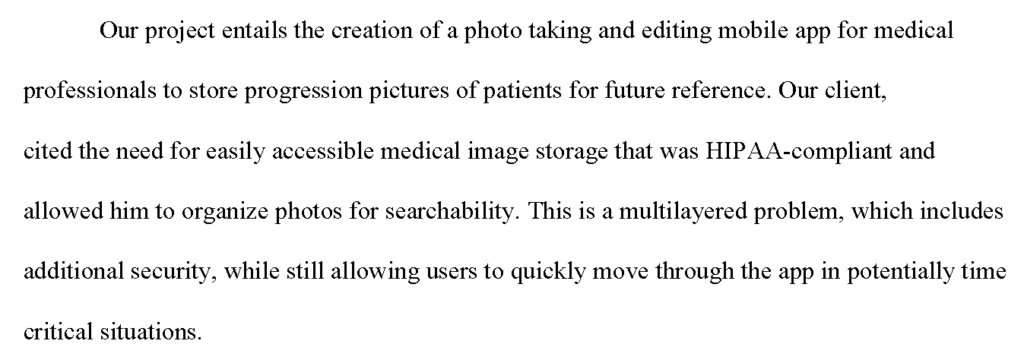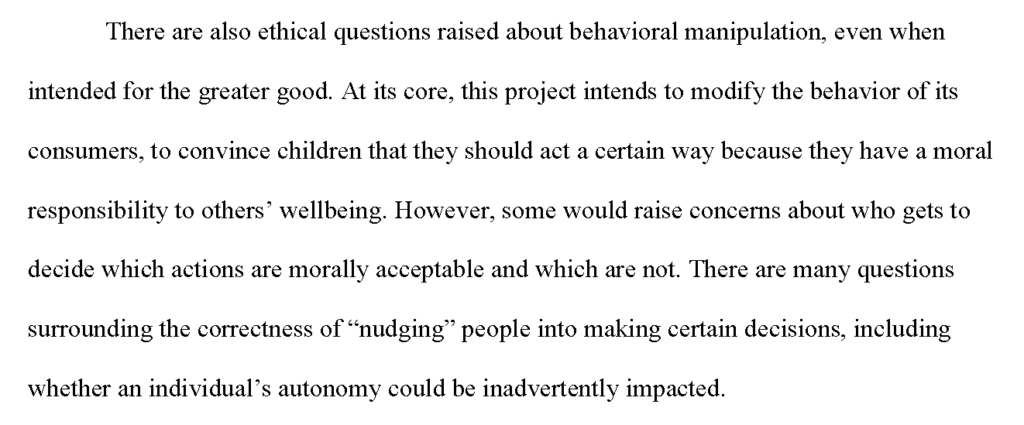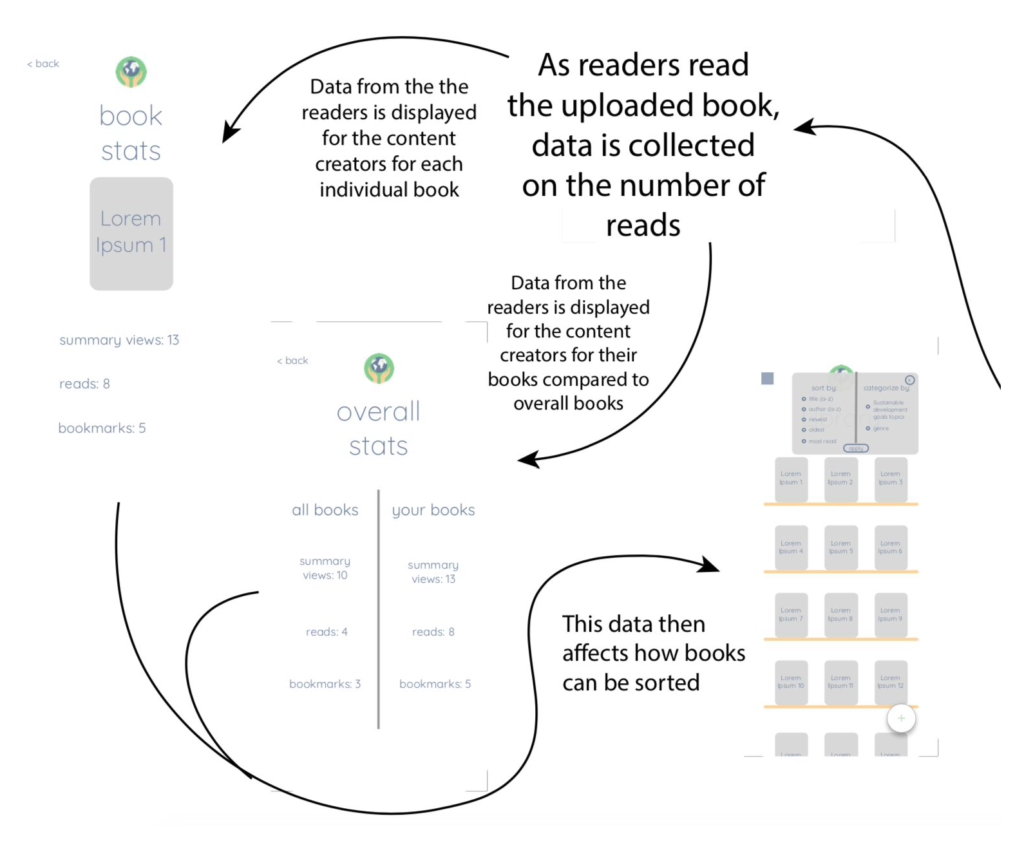
This article is a collaboration with Dr. Dori Coblentz, third-year Brittain Fellow in the Writing and Communication Program at Georgia Tech. It is the third part in a series on the development and implementation of an interactive ethics training module for Georgia Tech’s first-year composition and computer science students. See the first article, “Rethinking Instructional Scaffolding,” here, and the second article, “Toward a Scaffolded Ethics in the Writing Classroom,” here.
In making our scaffolded ethics lessons for the Spring 2019 semester, we (Dori and Jonathan) wanted students to leave with a sense of process that could lead to long-term ethical consideration and decision making. We had the unique opportunity to work with two different student levels—Dori’s first-year writing students in ENGL 1102 and Jonathan’s third and fourth-year computer science majors in the Junior Design program—and thus envisioned a collaborative set of “scaffolded” lessons that would allow both groups of students to teach one another. However, we wanted to get away from, or rather expand upon, the understanding of Vygotskian scaffolding as a mere hierarchical ascendance to some ethical zenith. Ethics does not exist as a fixed body of knowledge that one can incrementally climb or necessarily get “better” at with age. Instead, we wanted to model a spirit of ethical inquiry that would run throughout the semester and teach students how to use a range of knowledge and resources as ethical practitioners.
Certainly, this objective required providing students with a set of ethical frameworks—What are ethical issues of note, particularly in the realm of computer science and technology? Where might one go to learn or research about these topics?—but more importantly involved creating opportunities for students to put this ethical knowledge into a kind of structured play, a set of tasks that didn’t ask students to plug-in established answers to ethics problems but rather encouraged them to actively consider and develop ethical responses to ongoing product developments. As discussed previously in “Rethinking Instructional Scaffolding,” the client-led group projects from Jonathan’s Junior Design course offered us “real world” sites in which students could think through various ethical issues, but we needed to guide this conversation over the course of the semester in order to foster an awareness of how ethics can and should be a factor in every phase of the design process.
Of course, we needed to establish what we were working with, and in that way, we started very simply: we asked Jonathan’s third and fourth-year computer science students to compose brief descriptions of their projects for Dori’s first-year students. These descriptions covered projects ranging from medical photography to video games for learning assessment, and served as an introduction for both student groups. Junior Design students got a chance to package their knowledge; first-year students had the chance to imagine the needs of a long-term project. But even this basic act of writing to students in another class effectively re-oriented the dynamics of the first-year and upper division students’ relationship to their teams and projects. Despite being the more senior students, the Junior Design students were hardly experts on their projects. At that point, they had, at most, read a proposal of the project and had one or two face-to-face meetings with the client. Reporting to Dori’s first-year students was thus not a declaration of absolute information or even expertise. Rather, it functioned as a solicitation for help through the sharing of knowledge. To put it another way, the students’ writing was the beginning of a working relationship in which the stakes were strikingly “real”: the better the Junior Design students could describe the project—or the more questions or possible avenues of study they could raise—the better equipped Dori’s students would be to investigate the project’s ethical dimensions.



Junior Design teams provided descriptions of their projects to first-year writing students. First-year writing students used these descriptions to identify ethical concerns related to Junior Design projects.
The first ethics-specific assignment had Dori’s students composing advisory reports based on the descriptions provided to them. The students in Dori’s class were divided into teams and each team was assigned a project description from Jonathan’s Junior Design class. Following a lesson on secondary research, the first-year student teams created annotated bibliographies that provided a comprehensive overview of the literature around ethical issues relevant to their respective project. For example, an advisory report on a mobile rideshare application covered matters of safety, economics, environmental impact, and information privacy. The second part of this advisory report had Dori’s students draft a set of recommendations in which first-year students offered a preliminary set of ideas about how their partner Junior Design team might address the ethical issues pertinent to their project. Such reports not only addressed larger thematic concerns (e.g., privacy) but issues of practical use, such as when one group noted how a set of eye-tracking glasses could compromise the privacy of individuals if worn in a restroom or used to “look at confidential or personal information.”

First-year students authored advisory reports which addressed ethical concerns relevant to specific Junior Design projects. Here, a team of first-year students comments on the potential effects of an app intended to provide children with stories related to the topic of sustainability.
These advisory reports were given to the Junior Design students as guides for development as they engaged in user research and prototype design. The decision to provide students with these documents—and thereby provide them with a baseline ethical consideration—early in the design process was deliberate. It sought to present ethics as an integral part of software development rather than a post-facto review that could indict and dismiss whatever labor had been performed. Thought another way, we sought to move away from a model in which students produced prototypes and then asked “?” and instead wanted students to be asking, “what does this product have to do or look like in order to address the ethical concerns that we have been made aware of?” throughout the project development process.
This wouldn’t be the last time Dori’s students would assess the ethical aspects of the Junior Design projects. The Junior Design Program has an established segment on user experience (UX) testing where students make prototypes—physical paper prototypes and/or digital ones—and articulate a set of tasks to assess the usability of the project. Typically, this kind of testing was done intra-team as a kind of self-assessment or between teams within the class itself. In the Spring 2020 semester, we had the first-year student teams serve as the test users for the projects they had previously advised. After completing this UX testing, the first-year students were asked to produce short memos addressing any questions or concerns they had regarding the ethicality of the prototypes, with particular emphasis placed on the management of data and the accessibility of the project.

Junior Design teams created paper prototypes of their projects for first-year students to review. Here, a team illustrates the flow of data and its effects on the usability of an app for children that offers stories related to the topic of sustainability.
We saw this second round of cross-class interaction as further pedagogical scaffolding. We had very intentionally created a sequence of assignments, one of which required the other in order to fulfill our larger goals of a structured learning process. The advisory report by itself would have merely been the submission of an “answer” to an ethical problem that could be accepted or ignored; the UX testing by itself would have comprised a late development, post-facto “is it ethical?” assessment of a project. What was key about this form of scaffolding, then, was that it was not an absolute “building” on top of certain knowledge. Rather, it functioned as a kind of ongoing collaborative stewardship that could subsequently extend beyond the assignments themselves. When the first-year students were advising the third- and fourth-year students, they were not “scaffolding” towards a known summit—like a pre-conceived realization or fully-determined skill—but were instead refreshing an active, original pursuit that still had the ability to be molded. The various reports and assessments were thus concrete tools that could be replicated, but their efficacy was conveyed in their ability to convey an ethical consciousness that would exist throughout the project’s development.
All of these efforts culminated in an ethics plan contained within the Junior Design students’ final report for the class. Broadly speaking, this final report served as a record of development decisions made in the first part of the course as well as a preliminary plan for how students would implement the project in the second semester of the Junior Design program. The ethics section specifically asked students to “provide a summary of the ethical considerations relevant to your project” as well as “identify which recommendation—perhaps proposed by the students from ENGL 1102—you will implement in your app.” Junior Design students also had the option to modify a proposed recommendation. No matter their choice of action, students were required to cite the advisory report, the UX memo, and any additional secondary research performed in order to justify their plans.
Upon reviewing these final reports, we were pleased with the kinds of considerations the Junior Design students made in the development of their projects. Given the large amount of data gathering that was inherent to so many of the products, we were glad to see articulations of how they would anonymize or even limit the collection of data altogether. As one group creating a course evaluation system noted, being sensitive to ethics of data privacy would actually enhance the efficacy of their product because persons “will not want to take part in surveys if [they know] their responses can be linked to them.” As a result, “increasing anonymity will lead to better response quality.” Even projects that had fundamentally positive or ethical aims were found by the students not to be devoid of any ethical concern. An application for children that sought to promote sustainability through the presentation of stories itself had an ethical mission, but as the Junior Design developers pointed out, “all applications for children need extra precautions to ensure that their safety and wellbeing”—particularly around privacy—“are not compromised.” In fact, the team noted that there were very few official ethical guidelines for the mobile application market and thus it was necessary to defer to child privacy laws established by the Children’s Online Protection Act when creating their product. In other words, the past few months of scaffolding did not find the students “building up” to a set of existing regulations; rather, it gathered a developing and useful set of parts that the team itself had to combine in order to create and articulate its own set of standards.
What perhaps encouraged us most about these final assessments—along with the assignment series that led up to them—was the way in which they pushed against an assumed hierarchy of knowledge and showed how a more variegated, perhaps even egalitarian approach, could yield superior solutions. The experience of the team working on a sustainable stories app is fitting: there was not a set answer or standard to which they could appeal in order to make an ethical app. They themselves had to become an authority, but did so by sourcing a variety of inputs along with their own design experience. This very reality is also reflected in the assignment structure itself. By not employing a top-down approach to ethics learning—e.g. clients telling Junior Design students or Junior Design students teaching first-year writing students what is ethical—we sought to denature the idea that ethics is a fixed principle or skill. Ethics in all the projects was multifaceted, contingent, and not yet determined, and it required a collaborative effort to arrive at a comprehensive understanding of what might be at stake.
Granted, it is important to note that the Junior Design final report is not the end, and to believe so would be to gravely misunderstand it. As Jonathan tells students in his literature classes, if they leave his class only able to say smart things about the specific books they’ve read, then he has failed. Literature, like other disciplines, seeks to equip students with transferrable analytical skills that could be applied to multiple other contexts. Similarly, if students come away from our (Dori and Jonathan’s) set of collaborative modules only being able to say ethical things about their individual projects, we too have failed. The purpose of this scaffolded-ethics model lies in its ability to give students strategies to engage with ethics in any number of future projects. Certainly, that engagement may take the form of regular assessments from an external advising body. But more important than that is an ethical cognizance that knows how to see the moral ramifications of a project every step of the way. This is a cognizance that is not limited to the static authority of existing ethical solutions or answers from senior persons about what to do. Such answers can be outdated, or even wrong. It is a cognizance that requires asking questions and accepting suggestions from multiple levels of thinking and experience, a building of knowledge that doesn’t scale assuredly upwards but sometimes downwards and perpetually outwards.
